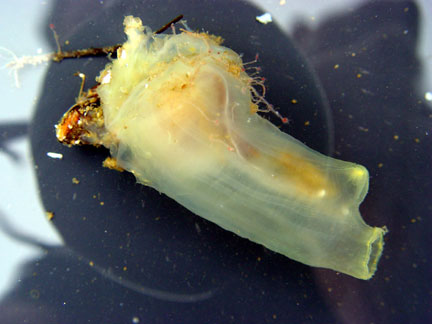 |
 |
|||||||||||||||
|
Tunicates, or sea squirts, are capable of growing in colonies or individually. The body of an adult tunicate is simple, composed of a sack with two siphons through which water enters and exits. However, many tunicates have a larva that is free-swimming and exhibits all the characteristics of a vertebrate organism. The larvae resemble tadpoles and have a nervous systems and nerve cord much like a spinal cord. After swimming for some time, the larva will attach to a hard substrate. At this point it loses its tail and ability to move, and its nervous system disintegrates. The species picture above is Ciona intestinalis, commonly known as a sea vase. This is an example of a tunicate that exists as an individual. Click on the image to see labeled anatomy. |
||||||||||||||||
|
||||||||||||||||
|
||||||||||||||||

